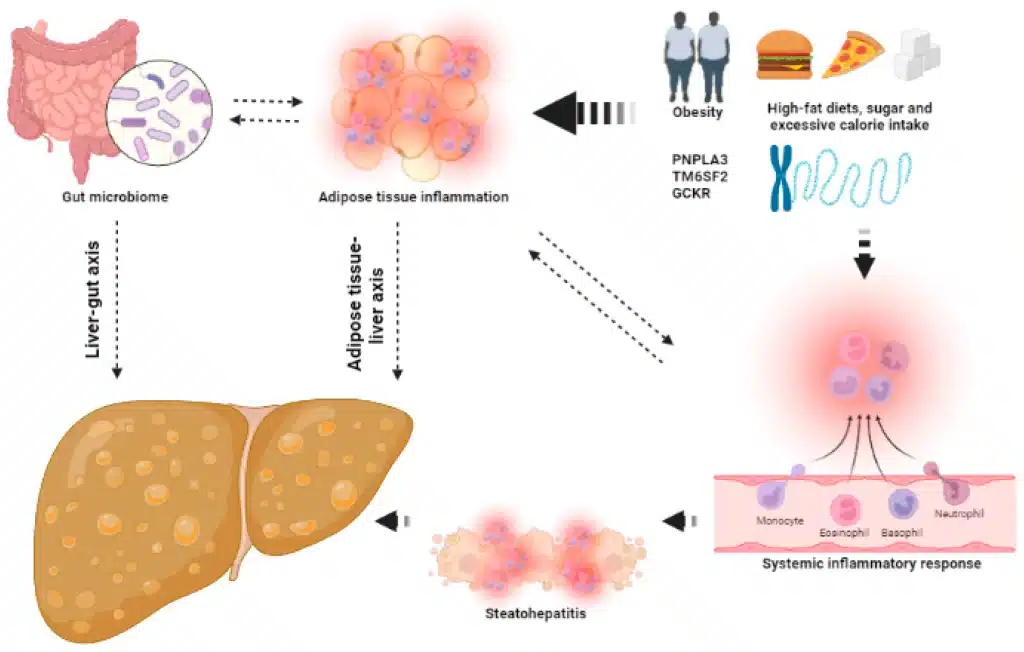Authors: Aitor Odriozola, Alvaro Santos-Laso, María del Barrio, Joaquín Cabezas, Paula Iruzubieta, María Teresa Arias-Loste, Coral Rivas, Juan Carlos Rodríguez Duque, Ángela Antón, Emilio Fábrega, Javier Crespo.
Link: https://www.mdpi.com/1422-0067/24/9/7791
Abstract:
Non-alcoholic fatty liver disease (NAFLD) is the most common cause of chronic liver disease worldwide, and its incidence has been increasing in recent years because of the high prevalence of obesity and metabolic syndrome in the Western population. Alcohol-related liver disease (ArLD) is the most common cause of cirrhosis and constitutes the leading cause of cirrhosis-related deaths worldwide. Both NAFLD and ArLD constitute well-known causes of liver damage, with some similarities in their pathophysiology. For this reason, they can lead to the progression of liver disease, being responsible for a high proportion of liver-related events and liver-related deaths. Whether ArLD impacts the prognosis and progression of liver damage in patients with NAFLD is still a matter of debate. Nowadays, the synergistic deleterious effect of obesity and diabetes is clearly established in patients with ArLD and heavy alcohol consumption. However, it is still unknown whether low to moderate amounts of alcohol are good or bad for liver health. The measurement and identification of the possible synergistic deleterious effect of alcohol consumption in the assessment of patients with NAFLD is crucial for clinicians, since early intervention, advising abstinence and controlling cardiovascular risk factors would improve the prognosis of patients with both comorbidities. This article seeks to perform a comprehensive review of the pathophysiology of both disorders and measure the impact of alcohol consumption in patients with NAFLD.
Keywords: non-alcoholic fatty liver disease; alcohol-related liver disease; cirrhosis; hepatocellular carcinoma

